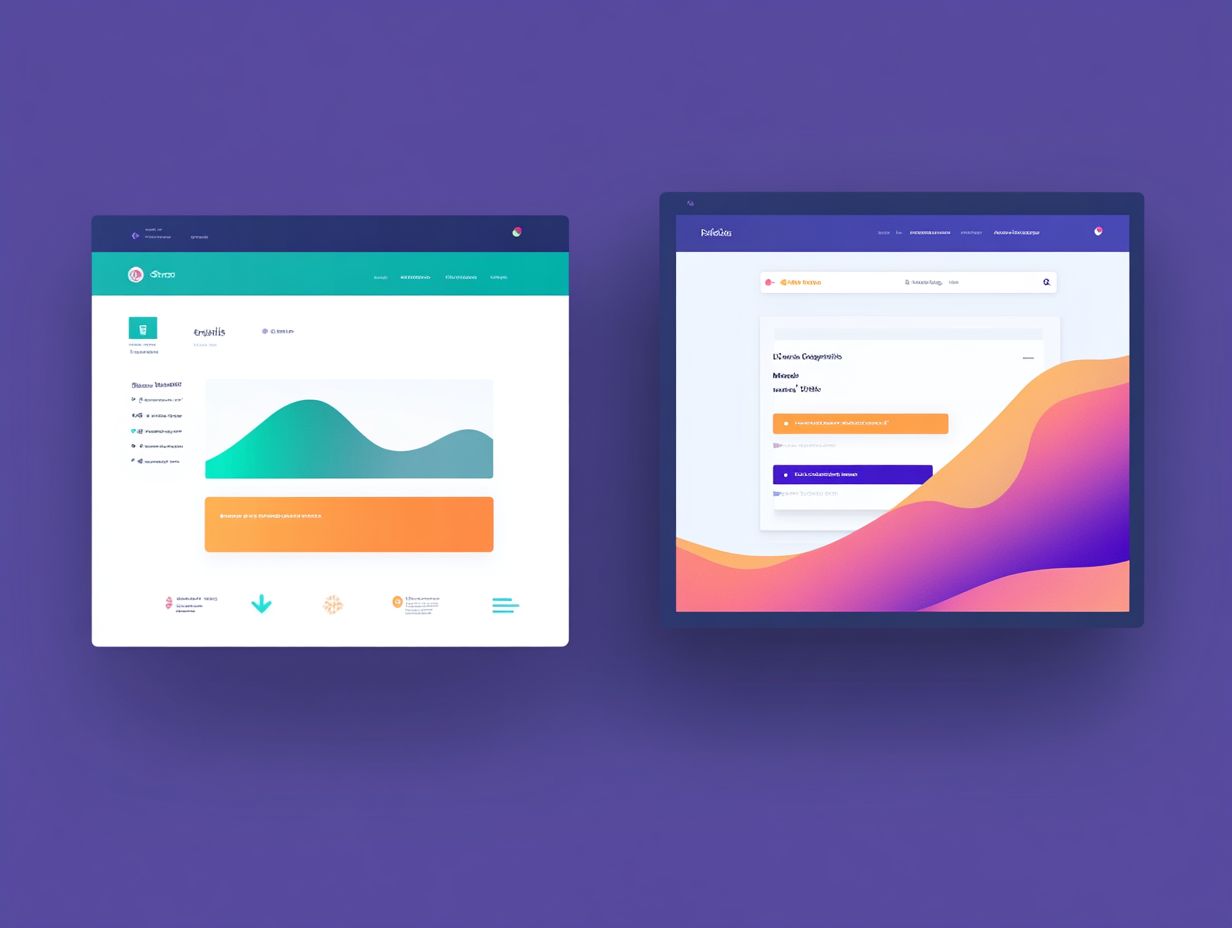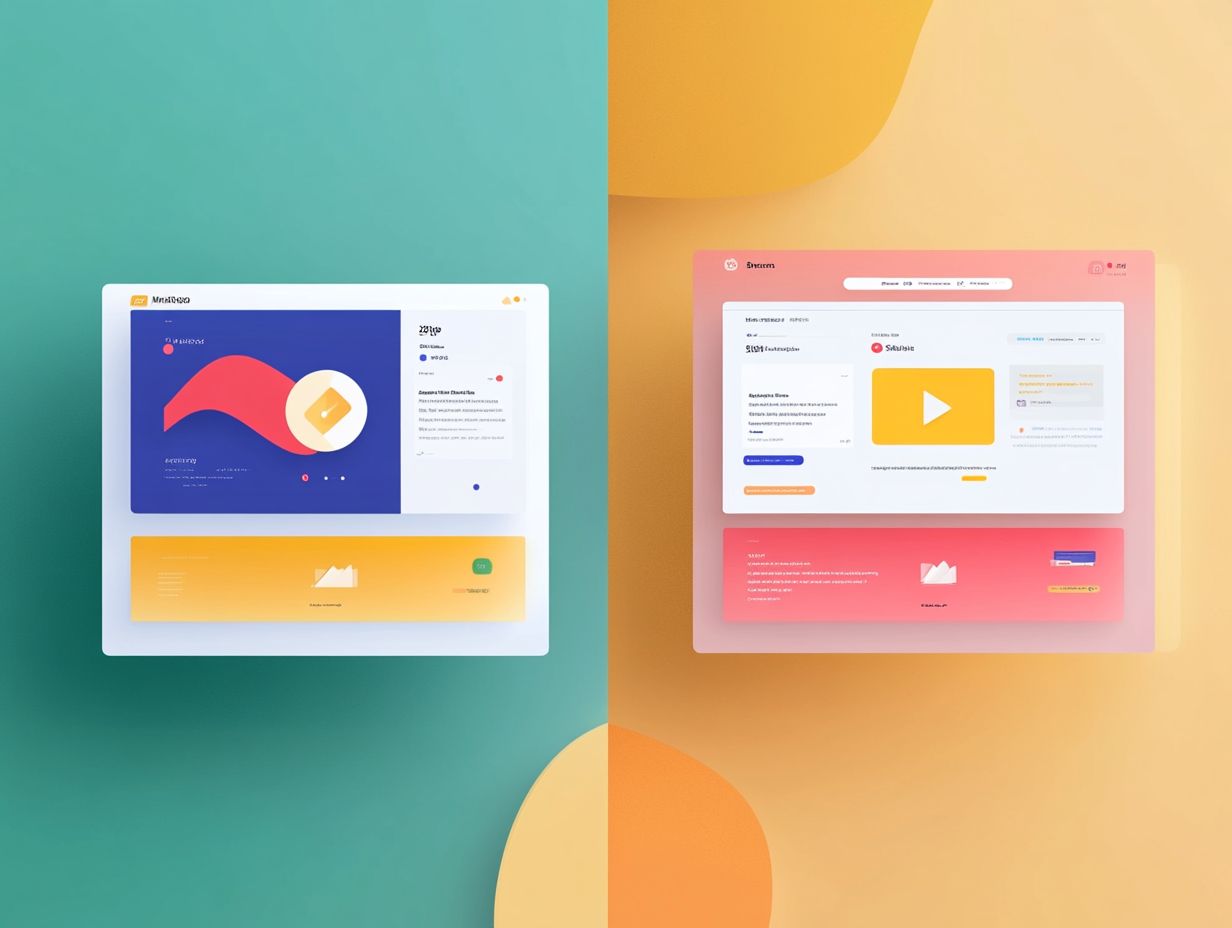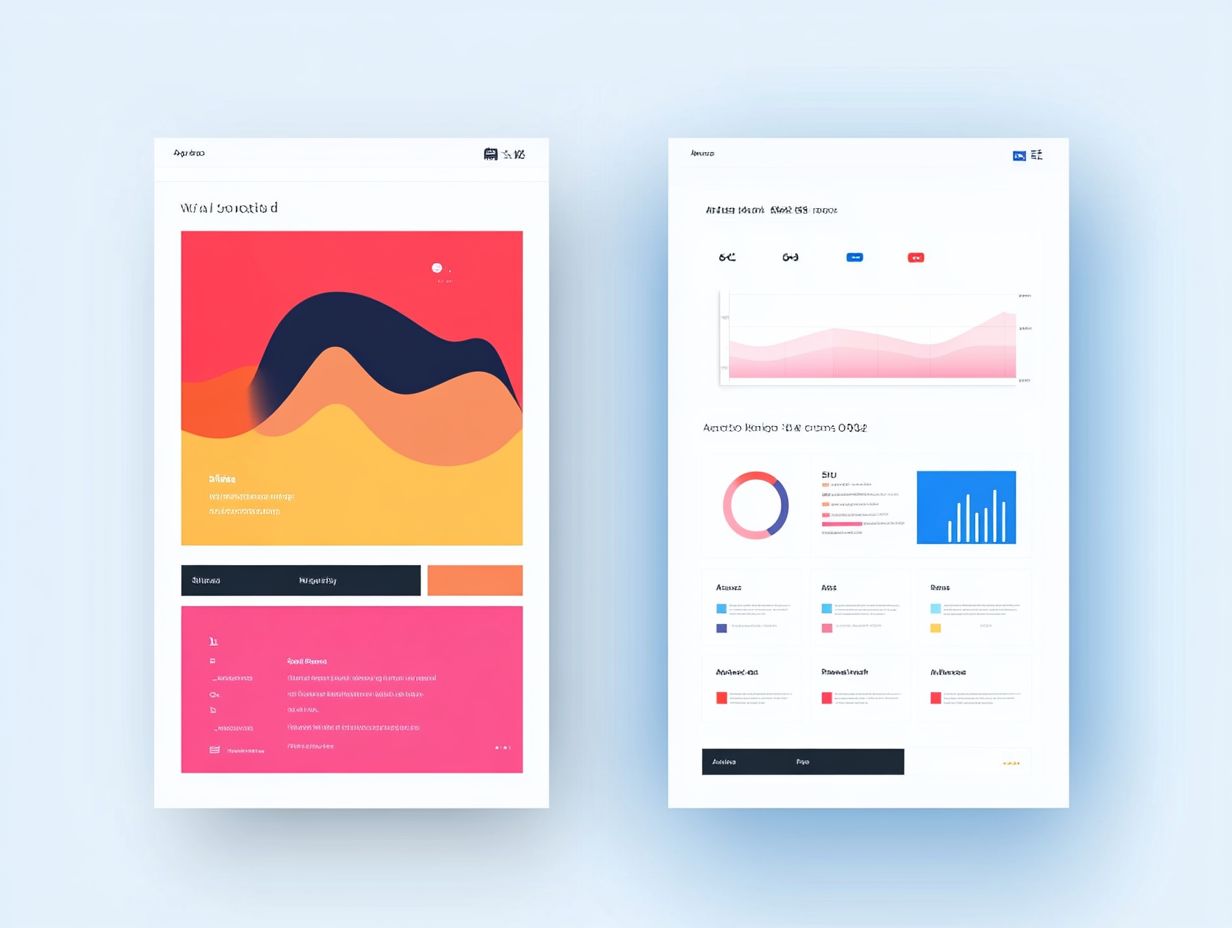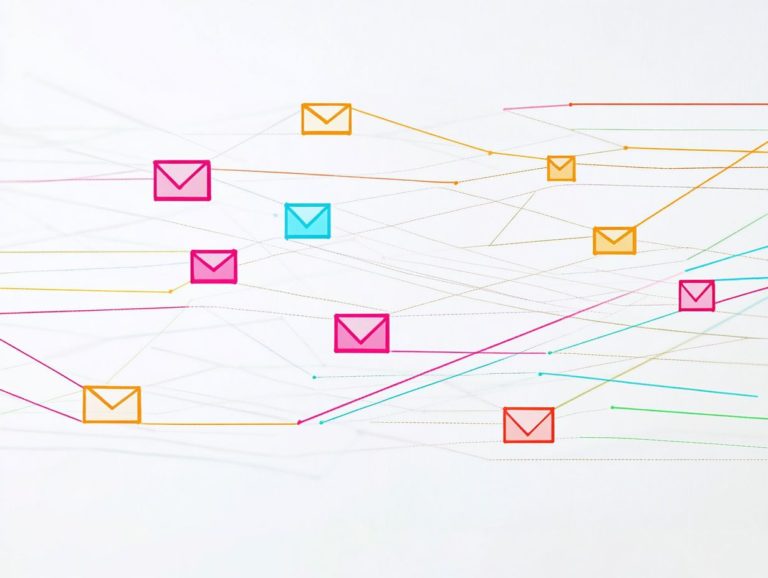A/B Testing: Optimizing Your Email Campaigns
Let's Set Up Your Lead Generation Strategy
Fill out the form below, and our team will get in touch with you to create a tailored solution for your business.
In the fast-paced realm of digital marketing, A/B testing stands out as a potent tool for refining your email campaigns.
This article explores A/B testing essentials that will boost your email campaigns. You ll discover how to execute effective tests by pinpointing key variables, crafting impactful experiments, and interpreting results to implement meaningful improvements.
Best practices will be shared to guarantee that your A/B testing efforts deliver optimal outcomes. Prepare to elevate your email strategy to new heights!
Contents
- Key Takeaways:
- Benefits of A/B Testing for Email Campaigns
- Let's Set Up Your Lead Generation Strategy
- How to Conduct A/B Testing for Email Campaigns
- Interpreting and Utilizing A/B Test Results
- Let's Set Up Your Lead Generation Strategy
- Best Practices for Successful A/B Testing
- Let's Set Up Your Lead Generation Strategy
- Frequently Asked Questions
- What is A/B testing and how can it help optimize my email campaigns?
- What are some elements of an email that I can A/B test to improve my campaign?
- How do I set up an A/B test for my email campaign?
- What metrics should I use to determine the success of my A/B test?
- How long should I run an A/B test for my email campaign?
- Can I use A/B testing for all types of email campaigns?
Key Takeaways:

- A/B testing improves email open rates by allowing you to test different subject lines, sender names, and preview text to determine the most effective combination.
- By testing variables such as design, call-to-action, and images, A/B testing can increase click-through rates and ultimately improve the overall success of your email campaign.
- To conduct successful A/B tests, it is important to identify key variables, set up tests properly, and analyze results for meaningful results before implementing changes based on the findings.
What is A/B Testing?
A/B Testing, often referred to as split testing, is a powerful method in digital marketing that allows you to compare two versions of an email campaign to determine which one shines brighter. This process involves tweaking specific elements think subject lines, email content, and visuals to see how they impact key performance indicators like open rates and click-through rates.
With the help of AI and data analysis, you can uncover valuable insights into customer preferences, enabling you to optimize your email marketing strategy guided by informed decisions.
These techniques are especially vital in email marketing, where personalized and engaging content is the name of the game. For instance, you might experiment with different calls to action to discover which one resonates more with your audience.
Platforms like Campaign Monitor and Hubspot harness the power of AI tools to automate this process, simplifying the way you experiment and refine your strategies. By systematically analyzing these variables, you can significantly boost your engagement rates, ensuring that your messages not only land in inboxes but also spark meaningful interactions.
Benefits of A/B Testing for Email Campaigns
A/B testing for email campaigns offers a wealth of advantages, giving you the power to refine your strategies with precision. It also provides a clear framework for measuring the impact of various elements such as subject lines and calls to action on open rates, click-through rates, and, ultimately, conversion rates.
By consistently implementing A/B tests, you can craft optimized campaigns that truly resonate with your audience’s preferences, significantly enhancing engagement rates.
Improving Email Open Rates
Improving your email open rates is essential, as it directly influences the success of your email campaigns and overall engagement. A/B testing can play a pivotal role in this endeavor, allowing you to experiment with various subject lines, incorporate personalization tags, and utilize attention-grabbing power words. By leveraging insights from your A/B tests, you can craft emails that truly resonate with your audience, ultimately leading to higher open rates.
One effective strategy involves analyzing the subject lines used by successful brands, like Netflix, which often employ curiosity-driven phrases that spark interest without revealing too much. Personalization is equally crucial; tailoring your emails based on recipients’ previous interactions can lead to significantly improved open rates.
Tools such as Hubspot and Campaign Monitor enable you to harness data analytics, allowing you to implement these strategies effectively. By segmenting your email lists and tracking engagement metrics, you can refine your approach, ensuring that each message captures attention and fosters a stronger connection with your recipients.
Increasing Click-Through Rates
Increasing your click-through rates is crucial for driving traffic and conversions from your email campaigns. By employing A/B testing, which involves comparing two versions to see which performs better, you can evaluate different types of email content. Experimenting with call-to-action placements and assessing visuals will help discover what truly resonates with your audience.
Analyzing these variables enables you to make changes based on data that enhance user engagement and interaction with your emails. Optimizing your email content for clarity and appeal is vital for capturing attention. Crafting enticing calls to action, such as “Discover More” or “Join Today”, encourages recipients to take that all-important next step.
Let's Set Up Your Lead Generation Strategy
Fill out the form below, and our team will get in touch with you to create a tailored solution for your business.
Incorporating compelling visuals can significantly elevate engagement. Studies consistently show that emails featuring images yield higher click-through rates. Utilizing tools like Mailchimp and HubSpot will help you track performance metrics and refine your strategies effectively.
Look at successful brands like La Mer, which successfully leveraged striking visuals in their campaigns, and the Bank of Tennessee, known for their strategic call-to-action placements. These organizations exemplify how targeted tactics can lead to substantial improvements in engagement rates.
How to Conduct A/B Testing for Email Campaigns

Conducting A/B testing for your email campaigns requires a careful approach to elevate the effectiveness of your marketing strategy. Begin by pinpointing the key variables you wish to test, such as email subject lines, content layout, calls to action, and personalization techniques.
Analyzing customer preferences through data is crucial right now! This insight allows you to craft optimized campaigns that truly resonate with your audience, ultimately driving engagement and fostering meaningful connections.
Identify Key Variables to Test
Identifying key variables to test is a foundational step in conducting effective A/B testing for your email campaigns. You can focus on various elements such as subject lines, email content, calls to action, and visuals to gauge what drives higher open and click-through rates.
By systematically testing these variables, you ll gain valuable insights into what resonates best with your audience. This enables you to create tailored and optimized campaigns. Proper selection of testing variables isn’t merely about trial and error; it s about understanding the nuances of customer preferences and behaviors.
For example, testing different subject lines can reveal whether a playful tone or a straightforward approach captures attention more effectively. Similarly, exploring diverse calls to action can help you identify which language prompts more engagement.
By employing data analysis techniques like regression analysis or multivariate testing, you can uncover patterns in customer interactions. Ultimately, integrating insights from data with a sharp awareness of customer preferences will help you refine the email experience, enhancing the overall performance of your campaigns.
Creating and Running A/B Tests
Creating and managing A/B tests for your email campaigns requires meticulous planning and execution to yield valid results. Approach your A/B tests with a well-defined hypothesis, which is an educated guess about what will happen in your test, and segment your email list accordingly.
When structuring these tests, it’s vital to think about timing. Ensure that they are conducted under similar conditions to eliminate any external variables that could skew your results. Timing plays a significant role in open rates, so selecting the optimal day and time is essential.
Defining clear measurement criteria, such as click-through rates and conversions, enables precise evaluations. By maintaining consistent testing conditions, you can gather reliable insights that lead to continuous improvement and refinement of your email strategies, ultimately driving better engagement and conversion in your future campaigns.
Interpreting and Utilizing A/B Test Results
Interpreting and utilizing A/B test results is essential for elevating the effectiveness of your email campaigns. Once your tests are complete, it s crucial to analyze the results to determine statistical significance. This ensures that any observed changes are not mere flukes of chance.
Armed with these insights, you can refine your email marketing strategies. Optimize future campaigns to achieve even greater performance!
Understanding Statistical Significance
Understanding statistical significance is crucial for accurately interpreting A/B test results and making informed marketing decisions. This concept empowers you to determine whether the differences you’re noticing between email variations are statistically meaningful or just a product of chance.
Let's Set Up Your Lead Generation Strategy
Fill out the form below, and our team will get in touch with you to create a tailored solution for your business.
By utilizing effective data analysis techniques, you can unveil actionable insights that will guide you in refining your email campaigns.
To calculate statistical significance, you typically turn to the p-value approach, which quantifies the probability that the differences observed could simply stem from random variation. A p-value of less than 0.05 is generally accepted as the threshold indicating that your results are statistically significant. For example, if an email campaign with a new subject line yields a 10% higher open rate compared to the existing one, calculating the p-value can help you discern if this improvement is truly reliable or just a coincidence.
Grasping these principles enables you to make strategic choices, ensuring that you allocate your resources to the most effective campaigns, all backed by solid data.
Implementing Changes Based on Results

Implementing changes based on A/B test results is essential for enhancing the effectiveness of your email campaigns. After analyzing the outcomes, apply successful strategies to your next campaigns immediately. Ensure that the lessons learned from A/B tests elevate your overall performance.
This iterative approach helps you continuously fine-tune your email marketing strategy, resulting in optimized campaigns.
By incorporating ways to learn from previous tests, you can gradually enhance your engagement rates and conversions. For example, Microsoft has seen amazing results by testing different subject lines, while Dropbox has doubled its user acquisition through tailored messaging.
These strategies underscore the significance of not just testing but actively integrating discoveries into your future efforts, fostering a culture of innovation and responsiveness in your marketing initiatives.
Best Practices for Successful A/B Testing
Implementing best practices for A/B testing can greatly elevate the effectiveness of your email marketing strategies. Start by formulating a clear hypothesis. Focus on one variable at a time to isolate its impact.
It s essential to divide your audience into groups that matter to ensure meaningful comparisons. Thoroughly analyzing the results will provide invaluable insights.
By following these best practices, you can maximize the knowledge gained from your A/B tests and continuously refine your campaigns based on choices based on data.
Tips for Effective Testing and Analysis
Implementing effective testing and analysis strategies in A/B testing can unlock valuable insights and elevate your email campaign performance.
A well-structured approach to A/B testing empowers you to dissect your strategies with precision. It’s essential to establish clear objectives that align with your target audience’s needs, as this can significantly shape the success of your campaigns. Timing plays a crucial role as well; sending emails when your recipients are most engaged can lead to more accurate results.
Utilizing advanced tools like Google Optimize or Optimizely can simplify the testing process, providing you with sophisticated analytics to interpret the data effectively.
Consider successful case studies where companies have achieved remarkable open rates by strategically timing their A/B tests. These examples highlight the profound impact of understanding your audience and leveraging technology to optimize outcomes.
Let's Set Up Your Lead Generation Strategy
Fill out the form below, and our team will get in touch with you to create a tailored solution for your business.
Frequently Asked Questions
What is A/B testing and how can it help optimize my email campaigns?
A/B testing, or split testing, compares two versions of a marketing element to find out which is more effective. For email campaigns, you send two variations to a portion of your subscribers and analyze which one meets your goals better.
What are some elements of an email that I can A/B test to improve my campaign?

You can A/B test several elements of an email. These include subject lines, preheaders, email design, call-to-action buttons, images, and sender names.
Each element influences how subscribers engage with your message. Testing different versions helps you discover the most effective approach.
How do I set up an A/B test for my email campaign?
Most email marketing platforms offer simple A/B testing features. Choose the element to test, create variations, and set the percentage of subscribers for each version.
After the test, the platform will identify the winning version based on your selected metrics.
What metrics should I use to determine the success of my A/B test?
Your metrics will depend on your campaign goals. Common measures for email A/B testing include open rate, click-through rate, conversion rate, and revenue.
Choose specific and measurable metrics to accurately track your test’s success.
How long should I run an A/B test for my email campaign?
The duration of your A/B test should relate to your subscriber list size and variations. Typically, run tests for at least 2-3 days for a solid sample size.
If your list is large, consider extending the test to a week or more for accurate results.
Can I use A/B testing for all types of email campaigns?
Absolutely! You can use A/B testing for all types of email campaigns. This includes promotional emails, newsletters, welcome emails, and abandoned cart emails.
A/B testing is a powerful tool for enhancing any email communication and refining your overall marketing strategy.






